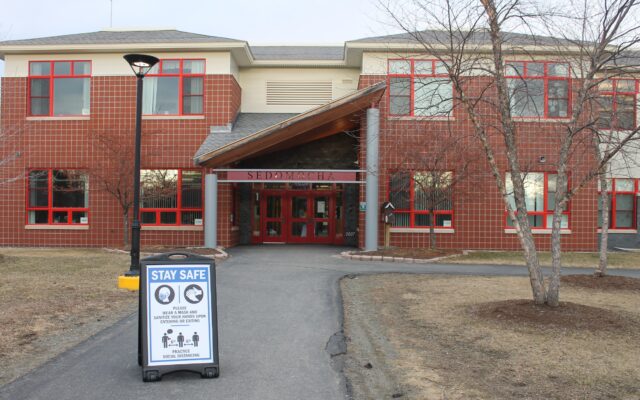
Maine schools face tough choices as they brace for end of federal COVID money
Maine’s public school districts facing the end of federal COVID-19 relief aid are trying to keep positions that helped students through tough pandemic times.
Superintendents said that although some hires were temporary, they made a real difference in addressing learning losses and behavioral challenges that students incurred during the pandemic.
Now the state’s school districts face crucial decisions about which employees and services they can afford to keep once the emergency relief funding dries up.
“What do we need to do within the scope of our regular budget to keep [positions and services]? Does that mean a cut or an increase in the budget someplace else?” said Steven Bailey, Maine School Management Association’s executive director, noting administrators are bemoaning that expiring funding will mean services beneficial to their schools will cease or change. “Those are the kinds of conversations being had throughout the state.”
In March 2021, the federal government released $122 billion in an unprecedented investment aimed at helping public schools nationwide to reopen buildings, address students’ mental health needs and help those who had fallen behind academically.
Maine’s Department of Education received $1,021,690,359 over the course of the pandemic, including more than $411 million for public schools from ESSER III, the third and most recent allotment of Elementary and Secondary School Emergency Relief, and other allocations.
Now, the experiment is nearing an end, with districts needing to commit the second and third rounds of funding by September of this year and September 2024, respectively.
As districts draw up their budgets, each has taken a different approach. Some, like Old Town’s district, are planning for the next several budget cycles, while others are saving difficult conversations for next year. Dover-Foxcroft’s district has found ways to absorb positions into other budgets.
Regional School Unit 34, which serves Alton, Bradley and Old Town, received about $3.9 million in the latest round of relief funds. District officials are considering how to retain $750,000 in positions and contracted services, which they are chipping away at as they draft a budget. That includes two teachers, from six to eight educational technicians and social work and psychological services.
Administrators are thinking creatively about how to shift from federal to local dollars because the people and programming serving 1,420 students have added immense value, Assistant Superintendent Jon Doty said. Planning a few years ahead is crucial for budgeting and staff development, and finding enough quality employees is a priority, he said.
Students’ needs won’t be all resolved by September of next year, he said. The pandemic was “a huge, disruptive event in their lives, and you can’t undo that super quickly,” he said.
Superintendent Matthew Cyr said many students required learning interventions and behavioral supports long before early 2020. Their needs bubbled to the surface during the pandemic, when meetings with tutors and counselors became essential, especially for those lacking support at home, he said.
The undertaking is particularly challenging when the district is also grappling with declining state funding because of shifts in a Maine DOE formula that considers the property valuations of communities and how much the state and local taxpayers will need to contribute.
Despite a calculation error on the state’s part in which schools ended up getting the same or more money than they originally expected, taxpayers still will have to come up with approximately $269,500 to meet RSU 34’s budget. The state’s recalculation netted an extra $217,000, which the district chose to apply toward the $486,000 that would have come from the communities.
The looming shadow of the Old Town mill’s shutdown could also shape the landscape of next year’s budget, Cyr said.
At the roughly 700-student Regional School Unit 68 — which serves Sebec, Dover-Foxcroft, Monson and Charleston — a special education teacher was hired using second-round relief funds because the number of students with behavioral needs had grown since the pandemic, Superintendent Stacy Shorey said. That role moved into the special education budget last year.
Relying on the most recent relief fund installment of about $1.79 million, the district hired a math interventionist, and there are plans to absorb that position into the budget for Title I, a federal education program designed to aid disadvantaged students.
Other positions that RSU 68 created were temporary and relied on the first iteration of relief funding, including four elementary teachers who were former or retired educators, Shorey said. In late April 2020, four educational technicians, who were college students home for the summer, were added at the middle school so each grade level could have a study hall.
While districts were required to set aside 20 percent of the relief funds on student interventions for learning recovery, they also funded one-time purchases that they normally couldn’t afford.
RSU 68, for example, used money to install a new HVAC system at the middle school, and the next allotment funded two new classrooms because the superintendent’s office moved to another location. It was thanks to the emergency funding that the district bought the building, as well as replaced the middle school roof and created a sensory room, among other projects.
“We have tried to be thoughtful with how we have spent the money to provide students with the best programming in a quality, safe environment,” Shorey said.